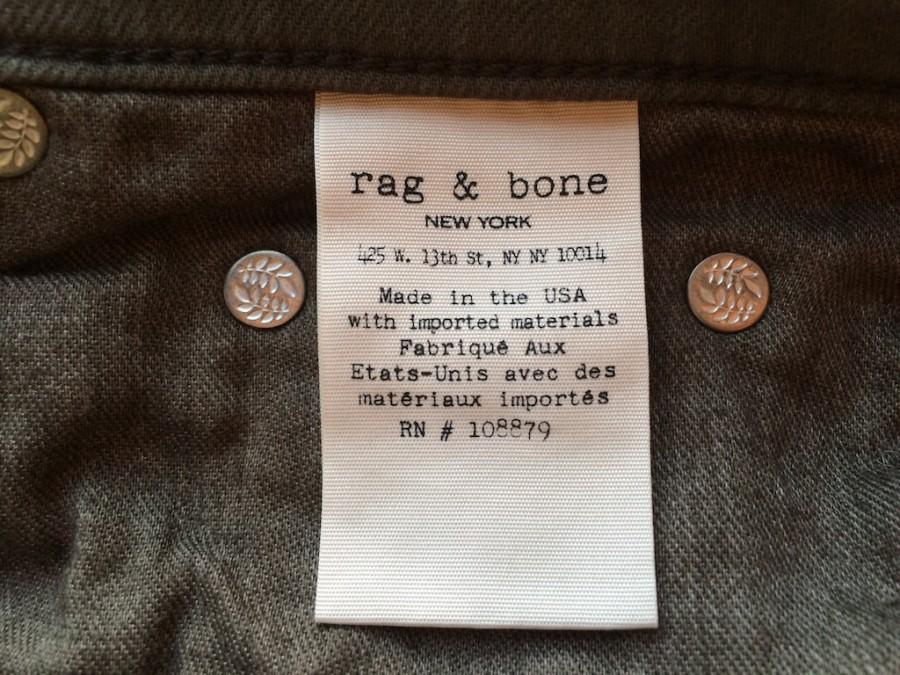Quality over quantity: where your clothes come from matters
December 16, 2015
Self-expression comes in a variety of forms, but the clothing we wear is a major vessel of expression that identifies the individual. In the age of materialism and fast fashion, what most of us fail to recognize is where our clothes came from. The fact of the matter is that where our clothing comes from does matter, and where we choose to buy our clothes affects the well-being of others, as well as that of the environment. Sustainably made clothing, however, comes with a trade-off: price.
If you took a look at your jeans, would you be surprised if you knew where they came from? While we would like to believe our clothes are manufactured in the U.S., the majority of our clothes are not. According to ABC News, only two percent of our clothes are American made.
Jeans are a staple piece present in the typical American’s closet, yet the quality of each American’s jeans differs vastly from one person to another. From $20 “imported” jeans from H&M to $200 “Made in USA” jeans from Rag & Bone, the price does not only skyrocket, but the way in which the jeans are made pales in comparison from the former to the later.
What we must recognize is that clothing, jeans in particular to continue with the example, are art and should be appreciated for how they are made in sustainable conditions. If you were to step back and look at the entire production of a pair of Rag & Bone jeans and how many people touch the jeans versus how many people touch a pair of H&M jeans, the difference would be striking. When you skimp on the cost of a pair of jeans, you are not only compromising on quality, but inadvertently supporting unsustainable manufacturing practices.
American backed companies, such as AG Denim, pride themselves not only in manufacturing their product in the U.S., but the way in which they manufacture their product.
Select American-made companies not only provide a sustainable living for their workers, but are working to further reduce their impact on the environment. In an article from Marie Claire, AG president Samuel Ku described the label’s eco-friendly production efforts via their innovative water-recycling filtration system.
“We’re always looking for new ways to recycle and conserve,” Ku said. “Not because it’s trendy, but because it’s something we should care about.”
The Los Angeles-based label is one example among others that constantly seeks for new ways to make production more efficient without compromising quality. Take for example another Los Angeles based company, the Reformation. A click on their website and you stumble across their catchphrase: “We make killer clothes that don’t kill the environment.”
The majority of the Reformation’s commerce is conducted online, which cuts energy consumption. Also, when you order from the Reformation, they include the materials necessary for you to recycle your old clothes by sending them back to the Reformation.
What I also find interesting about the Reformation is how informative their website is in terms of knowing where the clothes come from and how they are made. They provide a ‘RefScale’ for each item on their website that informs the consumer on the water and carbon dioxide consumption of the garment in comparison to the national average for a similar garment, something much more helpful in making purchasing decisions than the ambiguous “imported” label most companies give their products.
When the fashion industry is the world’s third largest pollutant and second largest consumer of water, Americans have the choice to reduce their own carbon footprint by making conscious decisions when purchasing their clothing. Purchasing from more sustainable companies such as the Reformation and AG, which practice sustainable manufacturing techniques and inform their consumers, is a small step in the right direction. While supporting sustainable labels moves us in the right direction in protecting the biodiversity of earth, it takes a hit to the average American’s bank account.
Sustainable manufacturing requires higher quality machinery, more employees, and the technology to host innovative water-recycling filtration systems, etc. These additional steps taken in the manufacturing process all contribute to a higher price tag.
The Reformation’s website reads: “At Reformation we think about all the costs in creating fashion—not just the price tag.”
For myself, I would rather have fewer clothes, clothes that I love and thought long about spending the extra dollars on because they were more meaningful to me, than having many clothes from unsustainable sources.
The quality of the clothes we shop for is directly connected to where they came from, which has repercussions beyond purchasing a new pair of jeans or the like when we are shopping. It is easy to forget about where the things we buy come from, but our purchases have a direct impact on the world. What we purchase ultimately came from somewhere else, and how many places that one piece of clothing has travelled consuming energy, how much water that piece clothing has polluted and how much carbon dioxide emissions that clothing has created depends on the company it came from.
In the end, we all have a decision to make when we hit the mall. Will we spend our money on a lesser quantity of sustainably made clothes, or spend the same amount of money on a greater quantity clothes stitched by a child laborer?
In the words of the former creative director at Dior, Raf Simons, “I’d like to see fashion slow down a bit,” Simons said. “What freaks me out about fashion today is the speed – the speed of consuming, the speed of ideas. When fashion moves so fast, it takes away something I always loved, which is the idea that fashion should be slightly elusive. Hard to grasp, hard to find.”
With advertisers tempting our every move with the latest closet must-have or the latest sale, our society progresses at such a fast pace that it often loses sight of the big picture. Getting caught up in the moment and giving in to fast fashion companies takes away from the art of fashion and what makes it special, as Simons described. Taking note of the sourcing of our fashions, making educated and thought-out decisions on the clothes we choose to buy, makes the clothes we wear special to us.
Fashion is our vessel for showing the world who we are and what we are about, and whether your vessel was made in America or not, is up to you as the consumer. We each have the choice to pay attention to where our clothes are made, and making the choice in one direction or the other directly manifests itself in our global impact. What do you stand for, and what clothes will you purchase?






















































